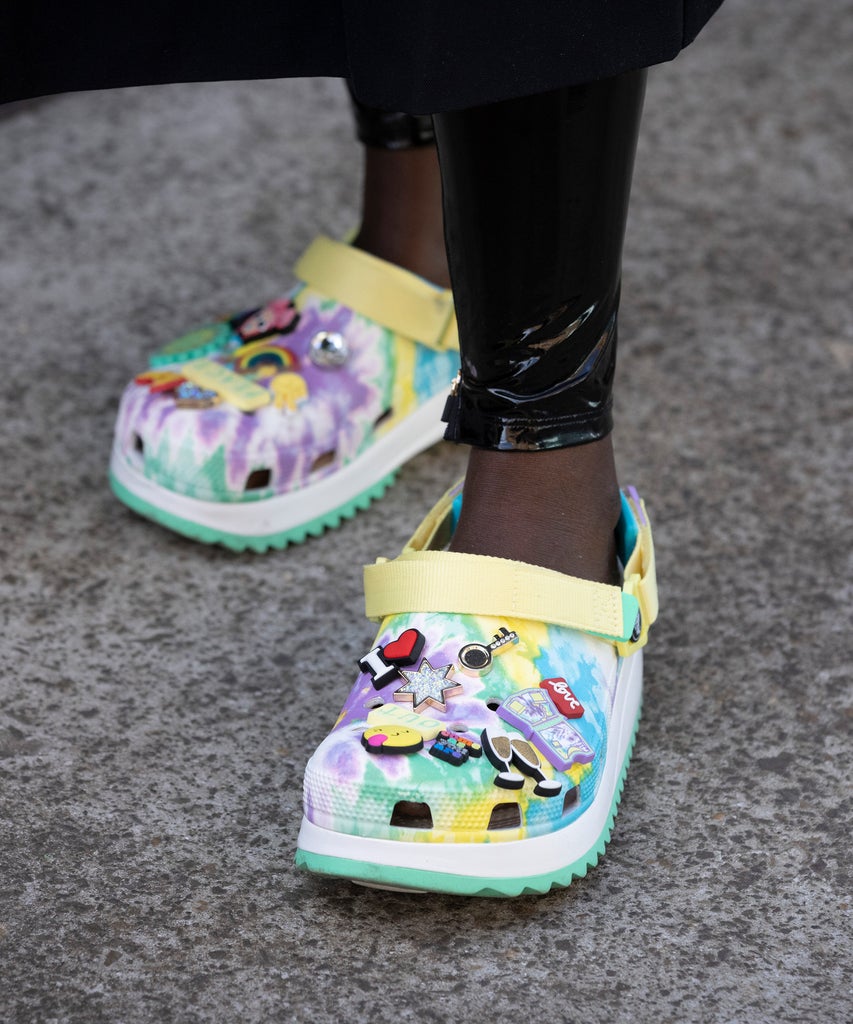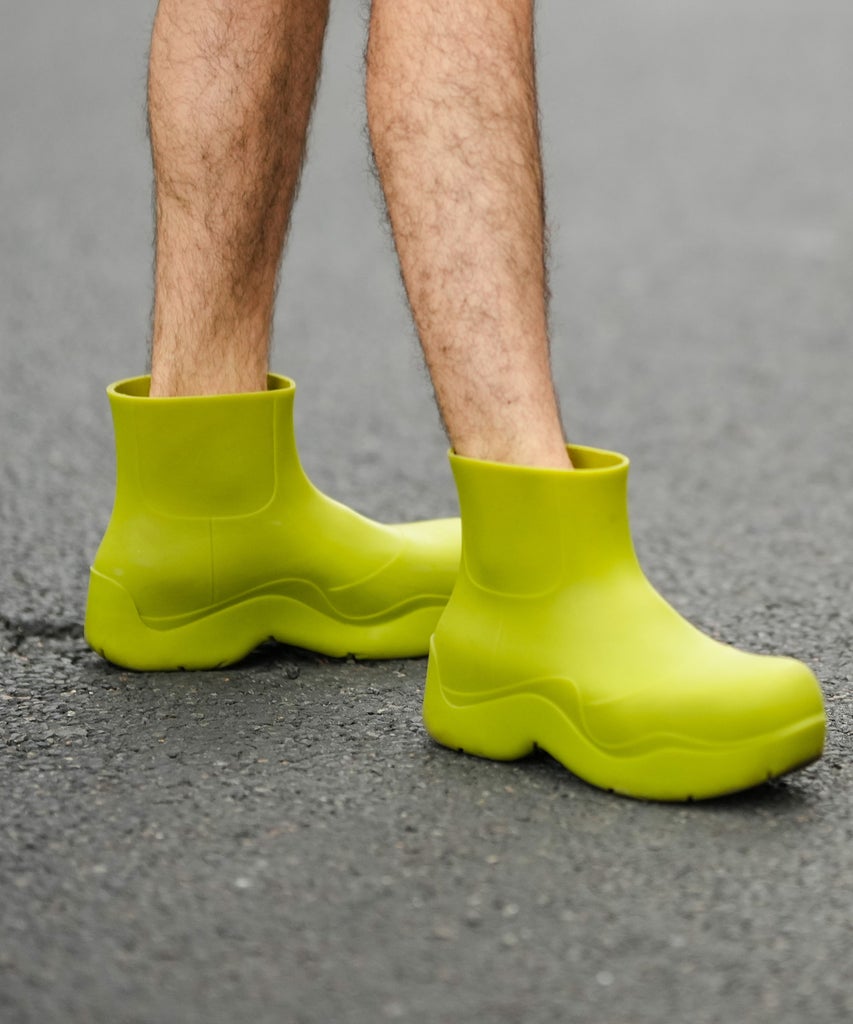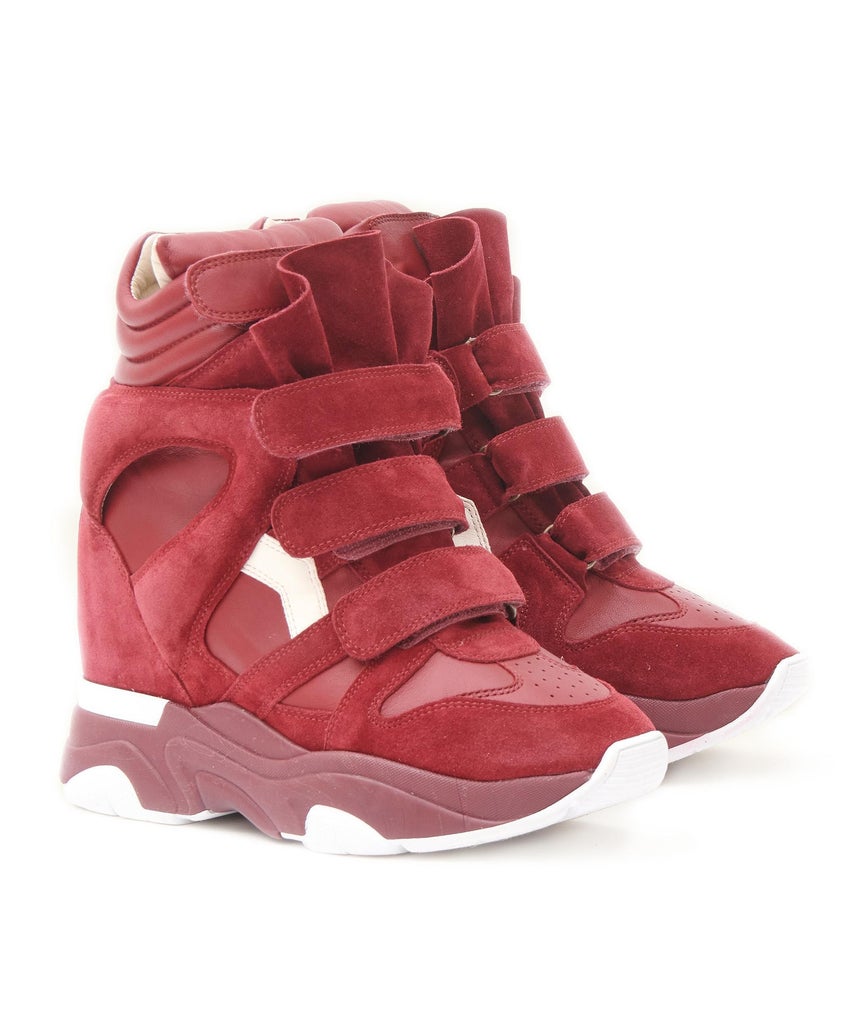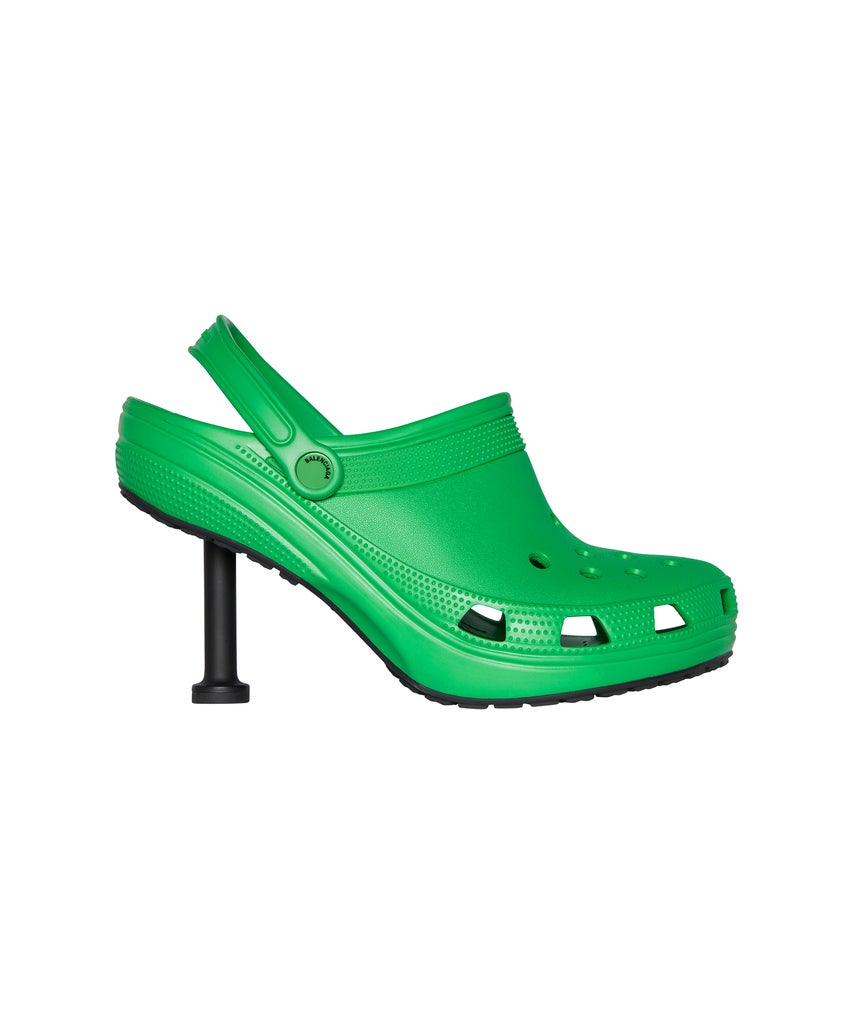
After depriving myself of any opportunity to spend money on things that weren’t absolutely unnecessary for about a year, I finally decided to break my “nothing new” shopping approach and purchase the absolute ugliest pair of Crocs I could find: Realtree Baes, a platform version of the brand’s traditional clog covered in camo print. They arrived at my door a week later, and I haven’t taken them off since.
I’m certainly not alone in my newfound love of “ugly” footwear. While many people scoff at some of the latest shoe styles — Bottega Veneta’s Puddle Boots, Christopher Kane’s Z-Coil sandal, Balenciaga’s many styles of Crocs, etc. — many more are taking out their credit cards.
“Ugly fashion attracts attention because it is different,” explains Carolyn Mair, Ph.D., a cognitive psychologist who specializes in fashion. We tend to ignore “normal” or average objects since we know how to process them, she says, but we pay more attention to complex or unusual objects — ugly shoes included.
By drawing the viewer’s attention, she adds, ugly fashion becomes fascinating. “It may be considered aesthetically unpleasing,” she says, “but it’s this exact feature that appeals to others… Wearing something different that draws attention could be interpreted as risk-taking, which may be perceived as exciting, adventurous, and fun.”

Iterations of conventionally unattractive shoes have been making waves in fashion for years. Christopher Kane debuted Crocs for his Spring 2017 runway collection back in September 2016, followed a year later by the first Balenciaga x Crocs collaboration in October 2017. Dad sneakers (or grandpa sneakers) have risen in popularity in the street style circuit, with shoes like the Fila Disruptor and Balenciaga Triple S becoming cult favorites amongst fashion’s elite. And let us not forget we’ve entered the Golden Age of clogs, with many designers putting their own spin on the clunky footwear that was once the province of Dutch field workers and Brooklyn moms.
A year-plus of social distancing and time spent at home due to a global pandemic has only given further rise to the popularity of ugly-yet-comfy footwear. While going out was no longer a thing, we ditched high heels for easier-to-wear styles for our masked-up trips to the grocery store. According to online retailer Klarna, there’s been an 872% increase in searches for “Crocs” since last June, and a 391% increase in searches for “clogs.”
As far as fashion psychologist Dawnn Karen is concerned, the dearth of social interactions since early 2020 has us looking to our wardrobes to help us engage more than ever. Wearing something that may be considered a conversation piece is a way to connect.
“If you and I have been indoors, and we haven’t had in-person interactions, going outdoors and wearing ugly footwear like the [Balenciaga] Croc stiletto will cause people to look at our feet, and they will begin to engage us,” she says. “Then we’ve gained our social points for the day.”
Even as the world begins to open back up and many of our lives return to some sense of normalcy, ugly footwear shows no signs of slowing down. Remember Isabel Marant’s iconic Bekett sneaker from the early 2010s (which some refer to as the OG ugly footwear)? It’s back and will cost you a cool $770 per pair today. Birkenstocks and Tevas are also enjoying an extended moment of glory, thanks to designer team-ups. But while there’s no denying that we’ve become pretty obsessed with heinous shoes, the question is why? Novelty alone is not enough to explain the fact that Italian label Avavav’s unseemly finger feet boots are almost entirely sold out.

According to Dr. Matt Johnson, founder of consumer psychology blog PopNeuro and host of the neuroscience and marketing training program Neuromarketing Bootcamp, the answer comes from the ways our choice of footwear can affect us on a deeper level. “The brands we buy and the clothes we wear have a deep impact on our mood and our behavior,” he says. “Some of this comes down to the item of clothing itself: how it feels on us, and how we think of ourselves while wearing it. We come to associate specific moods and mental states with specific items, so much so that when we put them on, we’re instantly transported into that state.”
Dr. Mair adds that this tendency to invest a garment with greater meaning is known as “essentialism,” or “an intangible property that makes an item unique.” In the case of clunky, bulbous styles like clogs, she says that some may believe them to send out a more welcoming message to others: “We tend to interpret round, curved shapes as soft, warm, and approachable, and jagged shapes as hard, cold, and potentially dangerous.”
So is ugly footwear here to stay? According to the experts, it is. Dr. Johnson mentions that throughout the pandemic, we’ve grown accustomed to the comfort of spending time at home — and the comfortable, ugly shoes that come with that. As life begins its slow return to normal, a few nostalgists may be excitedly dusting off their towering heels, but many of us will never look back.
“While people will ultimately ditch the sweatpants as they begin to head out into the world, the emphasis on comfort will likely remain,” Dr. Johnson says. “This may mean that traditionally uncomfortable heels may give way to more comfortable competitors.”

However, if it were only about comfort, we’d all be laced into matching Adidas Boosts. The instinct toward the ugly “comes back to differentiation,” Dr. Johnson adds. “People don’t want to just look good, they also, crucially, want to look different.” Crocs fit that bill, but they also fit another even more narrow category of items: So uncool that they’re cool.
“It’s a confidence move to wear Crocs, as if saying, ‘I’m so cool that I can wear these ugly shoes and still be cool.’ Or better yet, ‘I’m so cool, I can make Crocs look cool, ’” posits Dr. Johnson. That stands even when there are multiple versions storming up and down the block. Though, as Dr. Karen adds, once enough other people start adopting the “ugly shoe,” it starts to shed its irony and become “pretty.”
Whether you’re a lover or a hater, a comfort seeker or an ironic flag-waver, the ugly shoe will likely continue to grace runways, streets, and our social feeds for seasons to come. If you’ve been contemplating buying a pair of your own, there’s no better time to dip a toe in. May I suggest Crocs?
Like what you see? How about some more R29 goodness, right here?
UGGs: The “Ugly” Shoe Everyone Loves To Hate
Powered by WPeMatico






